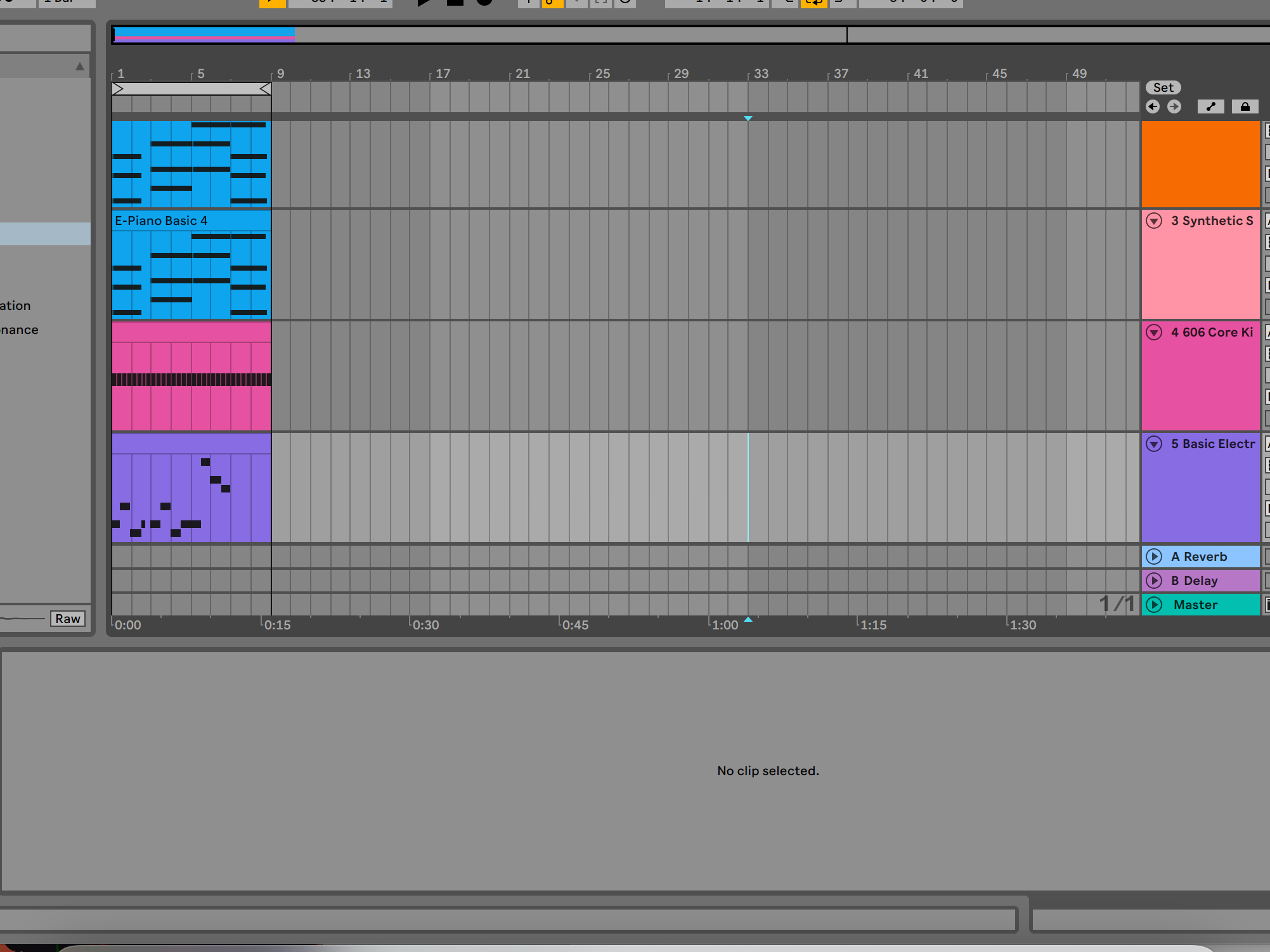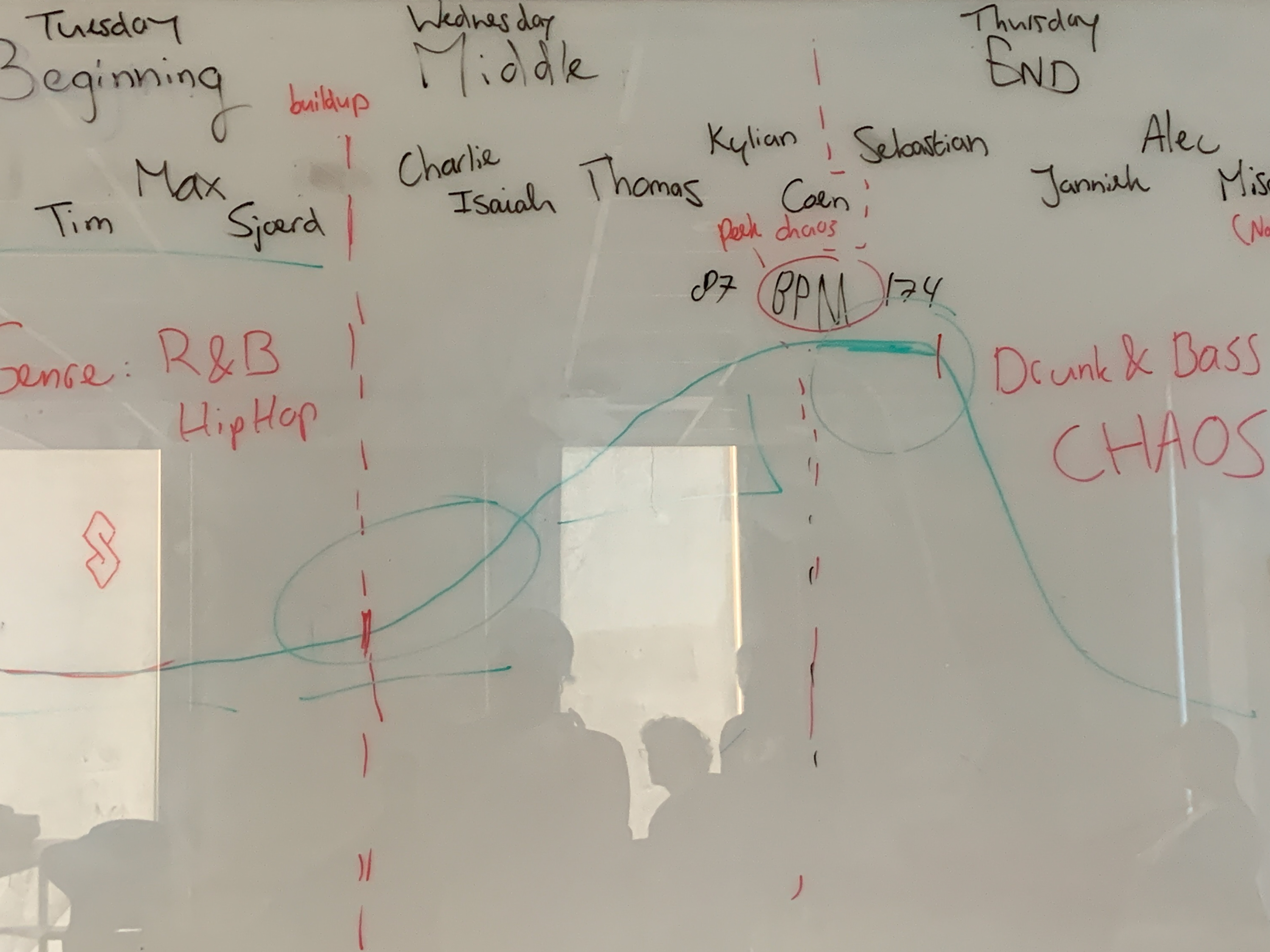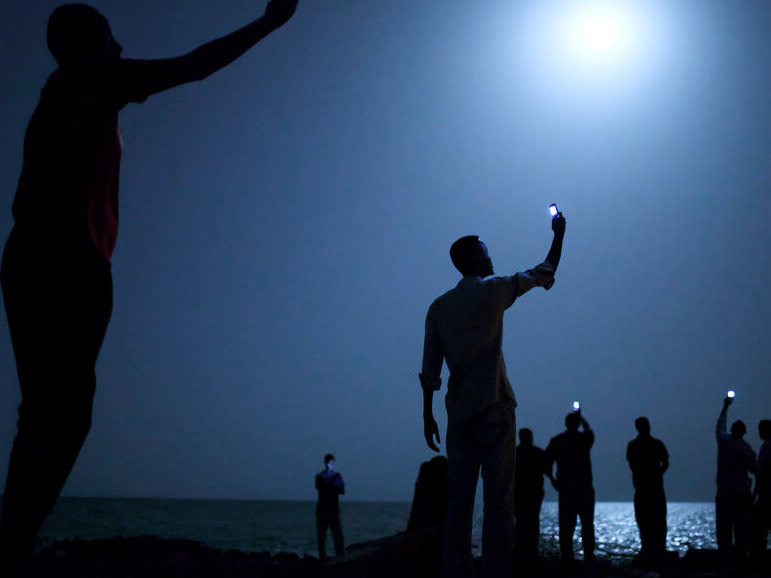Final Piece
What I learnt
Through this, our final group installation I learned four things; You don't always need beamers for Audio Visual Installations, how to use Arduino and how to code it, the importance of set dressing, and lastly, the importance of context and how you show things to your audience.
By using set dressing and picking a smaller room with lighting we could control, we were able to give the illusion of being at home without needing to use beamers and projection mapping. We would have projected a living room on the three walls of the room however that would have been more distracting to the audience and by not using one, by using lights ad blankets, we were able to sell the illusion of a cosy evening at home in your living room
I have never been strong at coding. I was always under the impression that it was for web design or game development. I never saw it as a way to elevate art. By using the Arduino we were able to time the audios to make a cohesive and elevated piece. I also feel that my javascript and CSS skills have improved
I never realised the importance of set dressing until this project. Without the comfortable chair, books, and household items, this setting would not have worked as well as it did
The way we tell and how we tell a story can really change our opinion of a situation. I learned through this project that if we told the refugees story first, people thought the privileged person was whiny. They were more empathetic to the privileged person when they spoke first. I also learned that the words we used and the way we said them also changed our audience's perspective. Through this I learned how important context is.
Week 1
Initial Brain Storm:

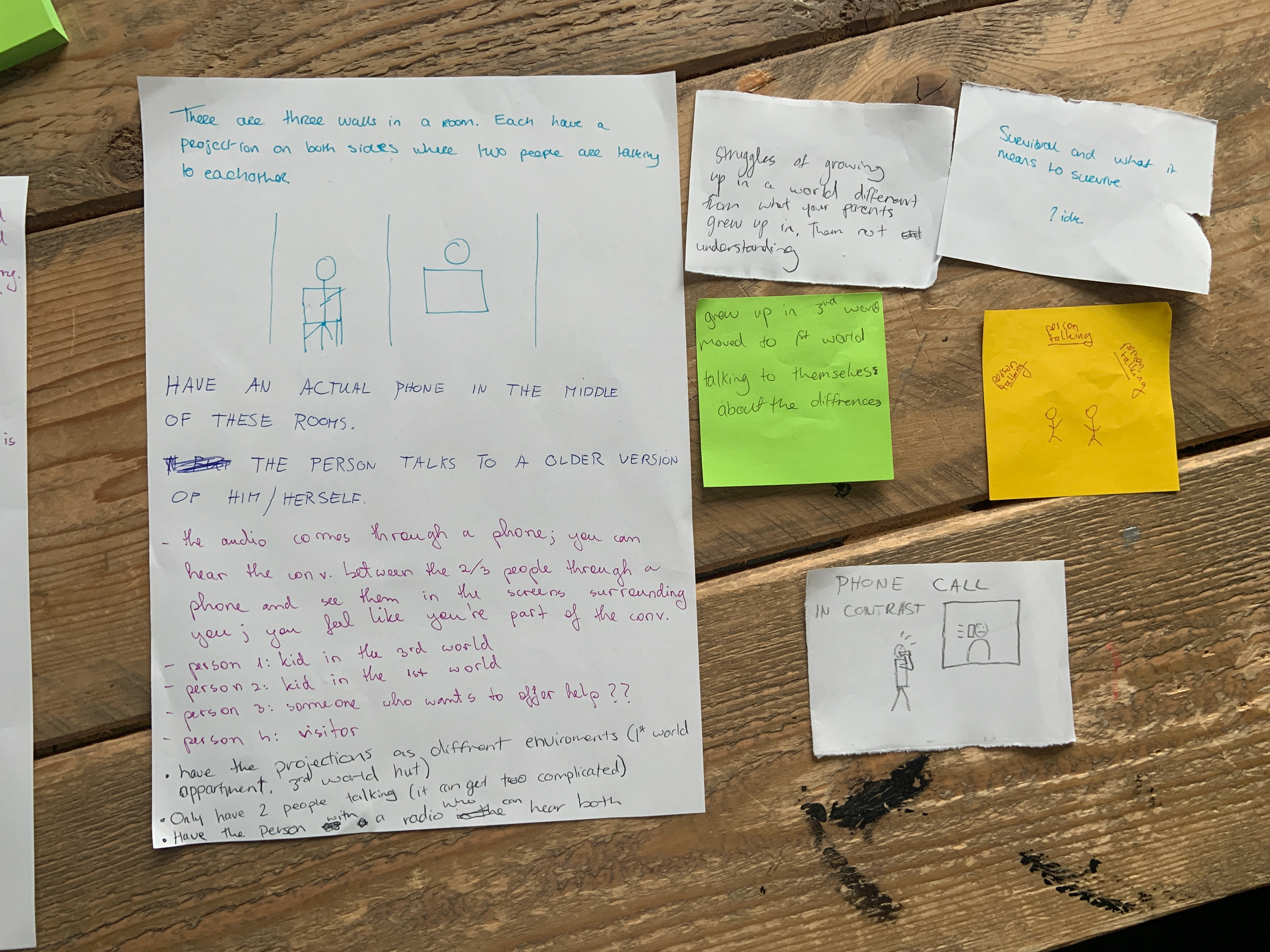

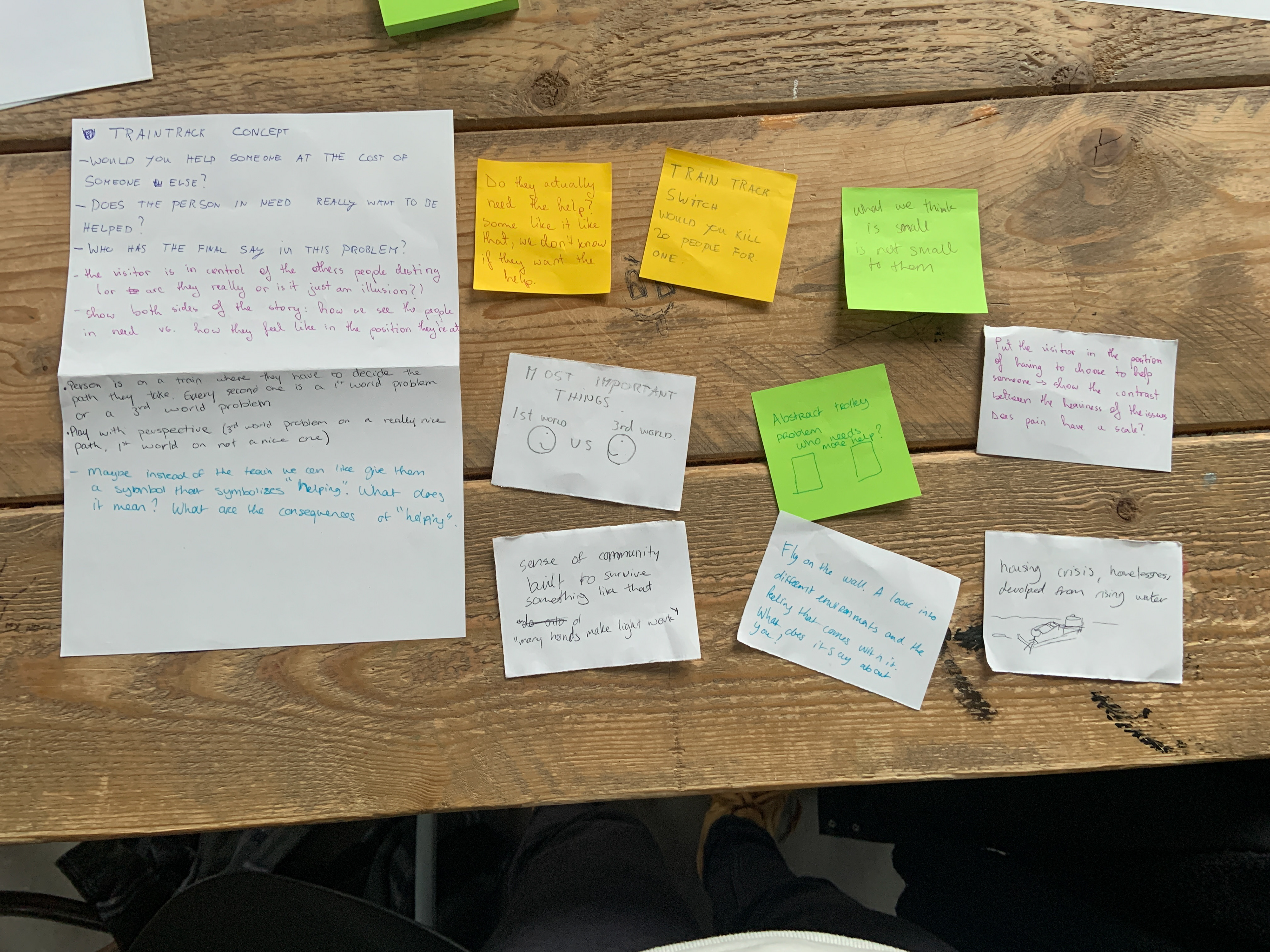
We started with developing concepts that could work with
We decided to go with the phone idea where you would be watching two people
We then looked into the types of problems that were first-world and third-world. We specifically wanted to look for ones that were used in both but held a very different meanings. Here are some we came up with:
“I’m starving”
“Fucking autocorrect”
“What a trek”
“It’s like a bomb hit the place”
“I’m exhausted”
“I’m dying”
“You’re scalded from the sun”
“That flight was a nightmare”
We were trying to find a way to make this idea that would take up the least amount of space and did some research into how other people had done it through their art. We took inspiration from my own installation "UFB - Unidentified Female Body" and decided we would have it look like a hole in the wall similar to the box in the body"
I then did research into different types of art that talk about the topic of 1st vs 3rd world problems. I found some great work by Banksy, De Vil, Cobs Hill, Urgus Gallenkus, and Pawel Kuczynski.


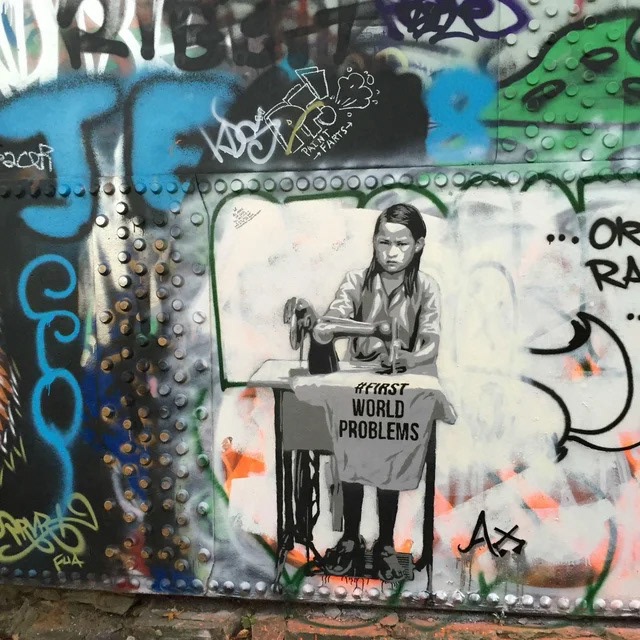










Concept Meeting:
We then had a meeting via teams where we decided we needed to change up the idea slightly to make it easier to execute while also holding the same amount of interaction. We went through concepts including having it as a zoom call, four different calls, having a wall between two people, etc.
Eventually, we came to the conclusion that someone would be sitting at home and they would get a call from their friend. The call would start with someone who has just landed from a flight to a luxury holiday destination. They would then rant to the person about how awful their flight was. Before the rant, someone else would come onto the phone, they would say that they had just landed after fleeing a country. They would also tell you about their journey. The two people would then alternate telling you their stories. Comparing common phrases like "we were starving", "It was a nightmare", etc. We could not decide though if we wanted to go with this altering conversation or two separate phone calls. We also weren't sure if we went with two separate calls or if should we have two phones (one modern, one older), and should we have the audience call the people or should we have the people call them, etc. We decided we should get feedback from our class during our LoFi version.
We also decided we needed to do some research into those in the developing world and the struggles they face. We agreed we would all do some research but I would take the main responsibility for it.
To the right, you can see the notes we made throughout the meeting
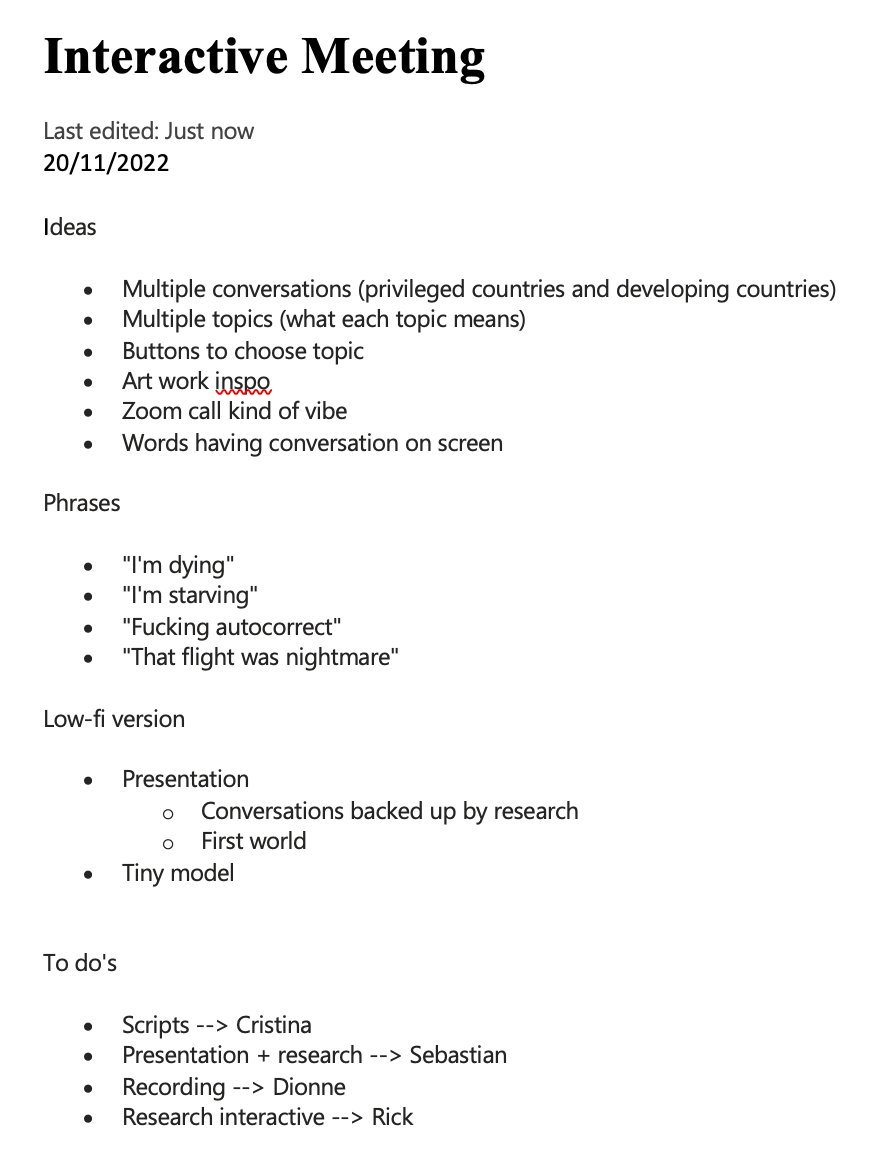
Research into Refugees and Developing Countries' Struggles:
I started doing research into refugees and developing countries' struggles to make sure our script was accurate. Some of the most interesting and I feel important facts that we would need to make sure our script was accurate
'69% of refugees come from one of 5 countries' Syria, Venezuela, Afghanistan, South Sudan and Myanmar
'Turkey is the most accepting of Refugees' Turkey takes in 3.8 million of the world's population of refugees
'There are 166 developing countries' According to the International Congress of Qualitative Inquiry, there were approximately 166 developing countries; of these 166 developing countries, 52 are African countries; currently, Africa has a total of 54 countries
'There are 166 developing countries' According to the International Congress of Qualitative Inquiry, there were approximately 166 developing countries; of these 166 developing countries, 52 are African countries; currently, Africa has a total of 54 countries
9 out of 10 refugee children travel alone
The average refugee will take 2 weeks to travel from their home country to a place of refuge.
Here are some links to articles, interviews, and agencies that work with refugees I used in my research:
Through my research, I found this photo taken by Angelos Tzortzinis of A refugee from Syria praying after arriving on the shores of the Greek island of Lesbos—aboard an inflatable raft across the Aegean Sea from Turkey—on September 7, 2015
I felt this was an extremely impactful photo and could offer huge inspiration and

LoFi Presentation:
On the day we presented our LoFi Presentation we presented a presentation of our concept, asked for feedback from the class, and, and demonstrated a LoFi version of our concept by having a person make a call to someone. You can see the image above and to the right the feedback we received from our classmates and teacher
Week 2
Script:
We decide to try and make changes to the script after receiving feedback that the privileged country sounded too whiny. This was definitely not what we were going for. We wanted to show the privilege but also that this person's feelings were valid. We tried to amend this by changing the voice acting, and also the lines in the script
We added some more details to the story of the privileged person so to create better empathy for them from the audience. Try and create an element relating to them. Below you can hear the updated audio we used
Set Design:
We decided instead of projection mapping to use the set dressing to sell the sense of being in your living room on a normal evening. We planned to do this through furniture, lighting, and other props.
These are the props we included
- Lamp
- Chair
- Blanket
- Books & Magazine (I Am Malala, a copy of vogue, and other random books)
- Laptop running sound
We used a smaller study room in the college for our set as we felt it would help create a sense of immersion. We felt that the smaller space would be more homely and give a sense of security compared to the classroom or meeting room.
We also decided that as well as the two phones on the table there would be a copy of, "I am Malala Yousafzai," and a copy of a fashion magazine. We felt that this subtle detail would add to the experience even without listening to the audio first.
Phones and Arduino:
We used an Arduino to do two things when it came to the old home phone. We used an LED strip on a timer, and a pressure button to start an mp3 file.
Using a pressure button, Rick programmed the Arduino so that when the phone was lifted off its base, the audio developing world audio would play. We then programmed the LED strip so that after 75 seconds the led would flash on and off. This was timed so that there was enough time for Rick to leave the room after the Arduino was plugged in, and then a couple of seconds after the first call ended to give the audience time to process what they heard
For the iPhone, we used an actual phone call instead of an Arduino. We felt that it would work better and not lose the immersion or interactive element of the installation. We called the phone 15 seconds after the Arduino was plugged into a power source. Once the person answered the phone we played the privileged audio off another phone away from the crowded corridor in front of the room we hosted the installation.



